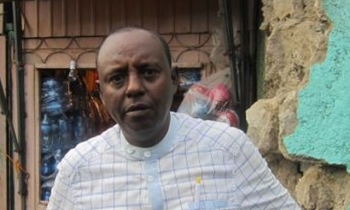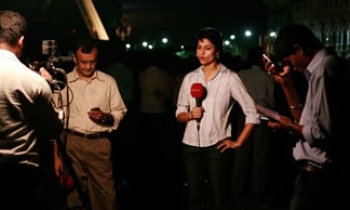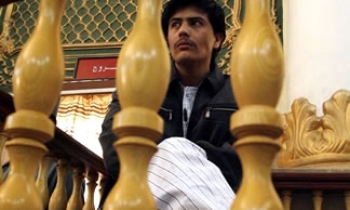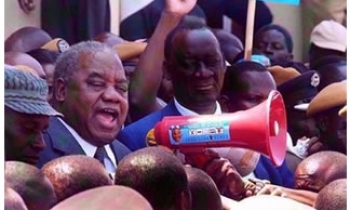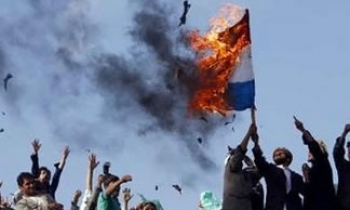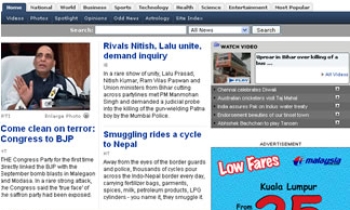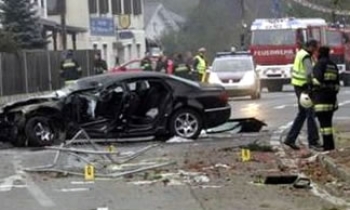As the attack by a deranged gunman unfolded at Virginia Tech on Monday, one thing became increasingly clear: In many ways, and for a growing number of people, blogs and wikis -- and Facebook and MySpace -- are the new CNN.
In the same way that reporters for the TV news network became a symbol of a new age, as they crouched on the rooftop of the Baghdad Hilton with their satellite phones while tracer bullets whizzed by, so live cellphone videos, blog postings and Wikipedia entries are becoming symbols of new media in 2007.
In other words, they are becoming the first place that many people (including journalists) look for information about a breaking news event such as the one in Virginia.
This ongoing evolution of media clearly has its benefits, but it also has its flaws, and there was evidence of both in the aftermath of the shootings.
The obvious benefit was that students were able to find out what was going on and get that information to friends and loved ones much more quickly. The downside was that some of the information they spread so quickly -- including an early report about a possible suspect in the school shootings -- was wrong.
Other recent events have produced examples of "citizen journalism," as some call it: cellphone photos of the subway bombings in London, videos and photos of the tsunami in Indonesia, and blog posts from the VampireFreaks.com website after a gunman who frequented the site opened fire at a Montreal school last year.
But the amount of material generated by students and others at Virginia Tech quickly became almost overwhelming on Monday, which probably isn't surprising, given the school's technical bent and the fact that young people of college age are the primary users of sites such as MySpace and Facebook.
Facebook, which has more than 19 million users and generates about 1.5 billion page views a day, quickly became a magnet for those looking for information. By midafternoon, a Facebook group set up as a tribute to the victims had more than 17,000 members and 2,000 comments. By midday yesterday, it had more than 130,000 members and 10,000 comments.
There were dozens of blog posts from within the campus itself, including ones from a student whose girlfriend was trapped in a classroom as the gunman mowed down her fellow students. Students posted updates to their Facebook pages, while others uploaded photos to the Flickr photo-sharing site.
Professor Dennis Hong found a unique way to keep his students at Virginia Tech informed while they were locked in a classroom: "I set up a webcam outside my window and sent a live video stream to my students in the lab," he told Associated Press, which carried a feed from his webcam in their news reports.
Wikipedia, a so-called "open source" encyclopedia that allows anyone to contribute to entries, was posting minute-by-minute updates to a page set up about the event, effectively engaging in journalism in real time and in full public view -- complete with editors' comments. Within minutes of the gunman's identity being released by authorities, a Wikipedia page was created.
"This is not that new," said Abby Goodrum, a professor at Ryerson University's School of Journalism who specializes in new media and worked with CNN during the Tiananmen Square massacre in China in 1989. "We had faxes coming in from Chinese citizens at Tiananmen, and in earlier times there used to be news reports from the battlefield sent in by telegraph."
What has changed, Dr. Goodrum says, is the speed with which information -- in some cases, wrong information -- can be disseminated, as well as the sheer quantity that can be generated with relatively little effort and virtually no cost.
The Web "basically cuts the middleman out of the picture and allows the people who were there on the scene to get their story out to a global audience immediately," Robert Niles, editor of the Online Journalism Review, told CNet News.
Cutting out the middleman makes it easier to get information out quickly, as many Virginia Tech students did on their blogs and Facebook pages -- and as their counterparts at Dawson College in Montreal did last year. But it can also spread misinformation, in a high-tech version of the old "telephone" game, in which a message gets passed along and quickly becomes distorted.
In the case of the Virginia Tech shootings, an Asian student with a fondness for guns and a penchant for dark poetry had his LiveJournal page besieged with insults and comments pointing the finger at him as the culprit, and eventually had to defend himself from the accusations with a blog post. There were also early reports during the shooting that there was more than one gunman, just as there were in the Montreal shootings (those reports were false in both cases).
What happened to the wrongly accused Virginia Tech student is "the flip side of the coin" when it comes to citizen journalism and social networks such as Facebook and MySpace, Dr. Goodrum said. "There may be some crowd wisdom, but you can also get a bit of a mob mentality." The traditional media, she says, "may have privileges, but they also have responsibilities."

